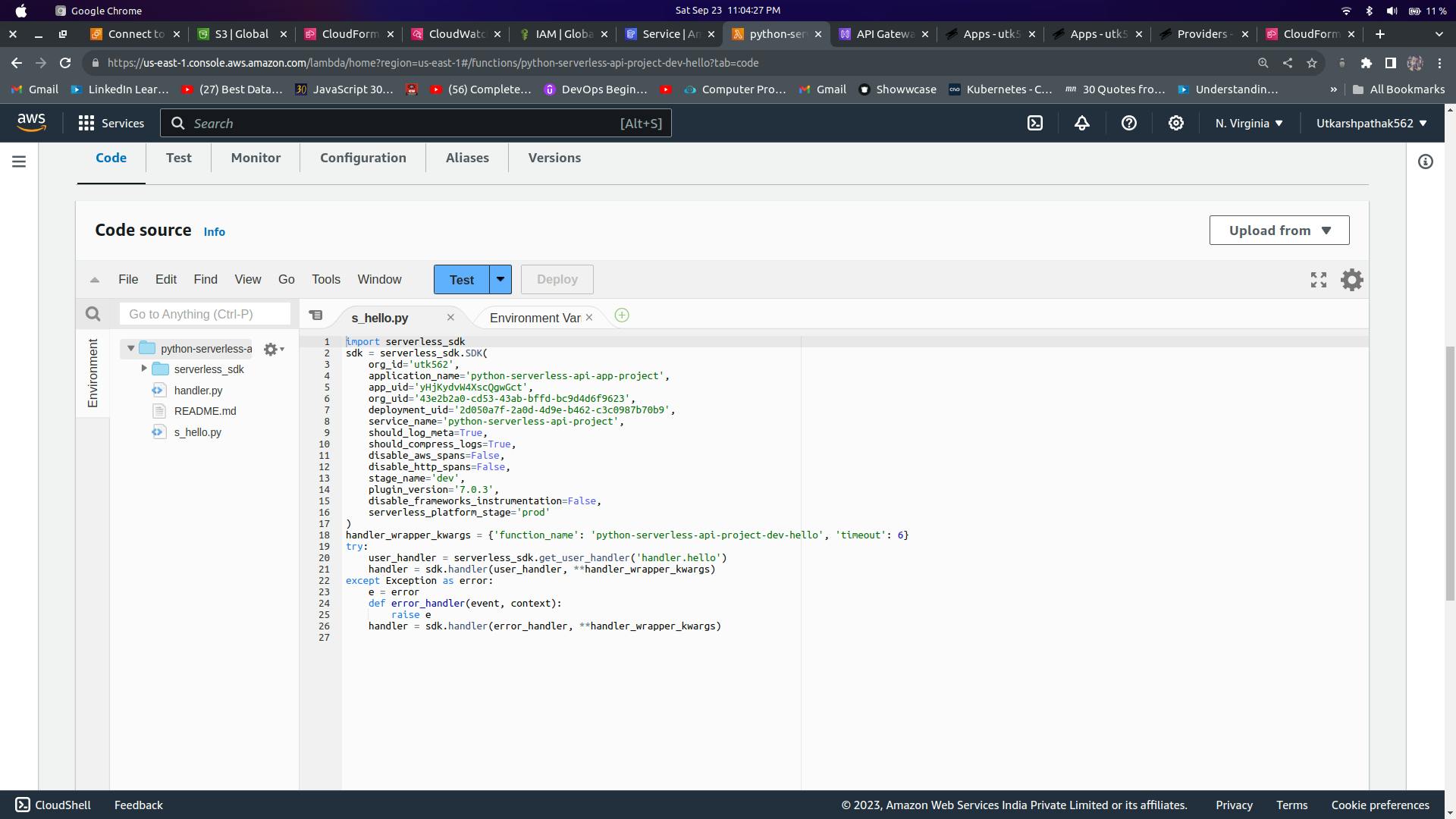Introduction :
What is serveless?
A serverless refers to an architecture and approach to building applications where you don't need to manage traditional servers or infrastructure. Instead, you focus on writing code for your application's functionality, and AWS takes care of provisioning and scaling the necessary resources to run your code.
There are some key components of Serverless :
AWS Lambda :
Lambda is a computing service that allows you to run code in response to events or triggers. You upload your code as a Lambda function, and AWS automatically manages the underlying infrastructure, scaling it as needed. Lambda supports various programming languages, and you only pay for the compute time your code consumes.
API Gateway :
It allows you to define API endpoints, manage authentication and authorization, and integrate with Lambda functions or other AWS services.
DyanamoDB :
DynamoDB is a fully managed NoSQL database service that is often used in serverless applications for storing and retrieving data. It can automatically scale to handle varying workloads.
Amazon S3 :
Amazon Simple Storage Service (S3) is commonly used for storing and serving static assets such as HTML, CSS, JavaScript files, and media content in serverless applications.
About the Project :
Our project focuses on building a serverless Python HTTP API using AWS Lambda and API Gateway and deploying it on the Serverless platform. This project leverages various AWS services such as AWS CloudFormation, AWS Identity and Access Management (IAM), Amazon CloudWatch, Amazon S3, Amazon DynamoDB, and AWS Lambda functions to create a scalable and cost-effective serverless application.

Let's understand the tools :
Serverless Framework:
We will use the Serverless Framework, a popular open-source tool, to define and deploy our serverless application. It simplifies the deployment process and abstracts the complexity of AWS resources.
AWS Lambda:
Our Python code will run as Lambda functions, allowing us to focus solely on writing the application logic without managing server infrastructure. Lambda will be triggered by API Gateway HTTP requests and various events.
API Gateway:
API Gateway will serve as the entry point for our HTTP API. It will route incoming HTTP requests to the appropriate Lambda functions, enabling us to define our API's endpoints, methods, and security settings.
Amazon DynamoDB:
We will use DynamoDB, a fully managed NoSQL database service, to store and retrieve data for our API. DynamoDB's scalability and reliability make it an excellent choice for serverless applications.
Amazon S3:
Amazon Simple Storage Service (S3) will be used for storing static assets, such as HTML, CSS, JavaScript files, and media content, which our serverless Python API may need to serve.
AWS CloudFormation:
We will define our infrastructure resources, including Lambda functions, API Gateway, DynamoDB tables, and IAM roles, using AWS CloudFormation templates. This allows for consistent and repeatable deployments.
AWS Identity and Access Management (IAM):
IAM will be used to define fine-grained permissions and access control for our serverless application. It ensures that only authorized entities can interact with our AWS resources.
Amazon CloudWatch:
CloudWatch will provide monitoring and logging capabilities for our serverless application. We can set up alarms to be notified of performance issues or failures, ensuring our API remains reliable.
Postman:
We will use Postman, a popular API testing tool, to test our API endpoints. Postman allows us to send various HTTP requests to our API and validate the responses, ensuring that our serverless Python API functions as expected.
Procedure :
Installation :
install nvm and nodejs with the version more than v:14
Install npm also
sudo apt install -g serverless
just type: serverless

go through the procedure and deploy it on serverless.
write down your application and then add serverless framework
and with the file handler.py, serverless.py file deploy it on the serverless tool provided by aws.
after you'll find the code and all stuff are stored in s3 bucket.

Cloudformation stores the stacks and give the view.

At last you can easily create the ci/cd pipeline easily with jsut one click.

Conclusion :
This project demonstrates the potential of serverless architecture in creating high-performance web applications, all while reducing infrastructure management overhead and cost. With the tools and knowledge gained, you're now equipped to take your serverless projects to the next level.
🚀 Stay inspired with our latest tech ventures - hit subscribe!
📚 Follow us for expert insights and project tips, and reach out anytime you need help or have questions. Your success is our priority!

